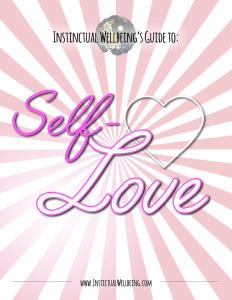Starting a new diet and lifestyle is not always easy – in fact, it can be pretty tough. I know that when I switched to paleo years ago, it was challenging for me – I didn’t know where to start, didn’t know what to eat, and was overwhelmed by all the new cooking and meal planning I had to do. So, in order to help you avoid some of the pitfalls I encountered when I first began, I have put together a quick list of 15 tips that can help get you started and hopefully, make your transition into paleo a little bit easier.
This is extremely important when starting a paleo diet, which does prohibit certain foods such as dairy, corn and wheat products – food products found in an overwhelming majority of processed and pre-made foods (and even some medications like Aleve have gluten in them). Really I could write an entire post (or three) over reading food labels alone – and maybe I will – but for today’s purposes, I’m going to direct you here to find hidden sources of corn, here to find hidden sources of gluten, and here for hidden sources of milk/dairy. These lists are not meant to overwhelm you – after all, the point of this post is to make paleo easy, right? – they’re just to help open your eyes and educate you on some common ingredients to look for when trying to avoid corn, dairy and gluten, all of which should be avoided when following a paleo diet. So just give them a quick scan, look for names that you often see on food labels and try to look out for them next time you’re at the grocery store. But honestly, the best tip I could possibly give you in this area is to only buy products in which you can pronounce and that doesn’t sound like it comes straight from a chem lab – buy whole, real foods and you shouldn’t have a problem.
I have had so many friends who were interested in starting a paleo diet reach out to me and ask for recipes. And yes, while I do have many recipes that are my own and I love sharing them (thus the blog), I also think it’s very important to teach my friends where they can find recipes on their own, rather than just me sending a bunch and when they run out are left back at square one (remember: Give a man a fish, he eats for a day; Teach a man to fish, he eats for a lifetime). So, what I like to do is send my friends who ask a list of my favorite paleo bloggers and Pinterest boards to get their culinary wheels a-turnin’ and where they can revisit for more recipes in the future. So, because I consider all of you my friends, I’ll do the same for you – visit here for a great starting list of paleo bloggers and then go to Pinterest and just type in “paleo recipes” or search #paleo or #paleodiet on Instagram and see what comes up – you’ll find thousands of amazing posts and recipes that will lead you to magical worlds of bloggers and recipe sites alike, so that you can start creating your own recipe arsenal for your paleo journey.
Again, this is another topic that I could, and probably will, write a series of posts over. But for now . . . my best advice for meal planning is:
a. Estimate how much time it will take you to cook meals (and set aside time to do so)
b. Plan to re-use ingredients (by choosing meals that make use of similar ingredients, you can reduce waste and save money along the way)
c. Choose a designated day of the week to meal plan (like a Friday over lunch) and plan to do your shopping on a designated day soon following (like Saturday morning). That way, you aren’t overwhelming yourself trying to meal plan and shop on the same day, let along trying to cook and prep food alongside that. Try to space it out throughout the week and you’ll avoid burnout. Also make a grocery list for the meals you’re going to be making and try printing off a meal planning calendar; this can make a huge difference in your meal planning organization.
This is pretty self-explanatory, but the idea here is to save time and money. You’ll quickly realize when following a whole foods, paleo diet, that you’re going to need to spend a lot more time in the kitchen. This is a fair trade-off for amazing health benefits and longevity, but if you have a busy schedule it can sometimes be a challenge. So cooking in bulk (personally, I choose to do this on the weekends) can save you a ton of time throughout the week because you can just have a “grab and go” system with the great, homemade food that you’ve already prepared for the week.
I’ll start this tip by saying that I would almost never recommend buying frozen dinners – these are full of additives and usually pretty processed (yes, unfortunately even the “healthy” brands like Kashi or Amy’s fall subject to this). However, buying some frozen fruits and vegetables can be a great way to save time and money, and avoid produce spoilage, while keeping the integrity of that produce (most produce is flash-frozen at the time of peak ripeness, so its freshness and nutrient value remains in-tact). Personally, I buy organic “California” blend and broccoli each week, along with some organic frozen mixed berries – they taste great and cook up perfectly.
So I don’t advocate for a ton of pre-made or canned anything, but there are a few exceptions, at least in my mind. For me, these items include artichoke hearts, olives, pre-cooked/sliced beets (only if the only ingredient is “beets”), and organic applesauce. Of course there are probably more and I’m sure you’ll find some of your own, but those are just examples. The main thing to look for when buying pre-cooked/made foods is the food label; make sure there are minimal ingredients (for instance, applesauce ingredients should be “apples” and almond butter should be something like “almonds and salt”), and make sure that you can pronounce all the ingredients. See tip #2 for more label-reading advice.
This may sound a little silly, but seriously . . . you’re going to be eating lot more fresh produce and doing a lot more cooking, and there’s nothing worse than trying to chop up a bunch of fresh veggies or worse, root veggies, with a dull knife and cutting board that slides around on you – TRUST me on this.
Once you try out some different meals for a few weeks, you should start to get into your groove-thang and hit on some recipes that you enjoy so much you start to rotate them into your regular food schedule. I’d recommend coming up with 5 really good, easy dishes/meals that you can master and keep in your back pocket. Having “staple” recipes like this helps to fill up your week with food (especially super busy weeks when you don’t have much time to meal plan), that become comfort foods for you and/or your family, and that help take some stress out of your life. For me, my 5 “go-to” meals are: a huge salad with all my favorite toppings, a roast chicken, burgers, California blend vegetables (cauliflower, broccoli and carrots) sautéed together with seasoning and coconut oil, and baked lemon-herb salmon. Start thinking of yours!
This is my best trick and I like you guys so much that I’m going to share it with you: I have several spice combinations that I love, but my favorite is one that I’ve termed the “Big 5” and I use it on about 85% of the dishes I make. Why? Because it’s awesome and flavorful, and really it’s the basic flavor profile for so many meats and produce (also though because I follow the autoimmune protocol and my spices are limited). But even if you don’t adhere to such a strict diet, I’d recommend whipping up a batch of this and using it to help season your meats and dishes throughout the week. All it is: Salt, Pepper, Garlic Powder, Onion Powder, Italian Seasoning. I usually just use equal amounts of all 5 and shake together and viola! Pure seasoning joy.
This is a secret weapon of mine that I’ve named the “one-pot skillet dish”. This has four components and can be totally customized for what you have in the kitchen or what you enjoy. All it is is a blend of meats (chicken, beef, bacon, etc.), whatever vegetables you feel like (I like a combo of California blend, Brussels sprouts, zucchini/squash, sweet potatoes and onions, but you can literally use whatever appeals to you or is on sale at your local market), some seasoning (like the Big 5) and your choice of fat (leftover bacon grease and/or coconut oil are my favorites) sautéed together in a pan (the “skillet”) and then served. It’s quick, it’s easy, it’s cheap, and it’s friggin’ delicious. So master it, young grasshoppers, and soon you shall be a paleo master.
Basically if you’re ever wondering if something is truly paleo or not, the simple way to tell is by asking if it passes the “did your great grandmother/grandfather eat this?” test. Chances are if it wasn’t around 100 years ago, then it’s probably not “paleo” (aka it’s probably processed, a product of factory farming and pumped full of additives).
When you start eating paleo, there’s going to be a shift that happens to your pantry: you’re going to have to go through and clean out a lot of the items you were using and replace with new, delicious pantry staples. I recommend having these on hand so that you don’t have to always run out buying new things for each recipe and nickel-and-diming yourself to death. I actually really like this cool resource for figuring out what pantry items you may need to stock up on, so give it a look-over and see what you’re interested in. Common items are things like nuts, honey, almond flour, coconut oil, coconut milk, vinegars and high-quality beef/chicken broths. Note: Do not go buying every single item on this list thinking that you need to in order to start eating paleo. Just use it as a guide and resource.
This is pretty self-explanatory, but just spend some time checking out the “health foods” section, meat sections and produce sections at your local grocery stores. That way, you can have an idea of the types of foods/ingredients your store stocks and can use that to help meal plan (for instance, my girlfriend is from a fairly small town with one grocery store. When she started eating paleo, she found a ton of great recipes but much to her dismay, discovered that she couldn’t find many of the ingredients at her small town’s grocery store. So, she took inventory and now keeps that in mind whenever she is meal planning for the week and looking for recipes back home).
There’s a lot of debate about this within the paleo community, but the truth is that there can be different variations of “paleo” based on your lifestyle and nutrient needs, so listen to your body and learn what works best for you. For instance, a hard-gainer trying to gain 15 healthy lbs of body weight may want to consider following paleo, but incorporating some additional, easy-to-digest starches like white rice or maybe even a high-quality whey protein powder (which contains dairy). Or, an individual who works 12+ hours a day in a warehouse or doing manual labor may consider increasing their intake of paleo-friendly carbs (like root veggies and fruits), because they may need the energy. Likewise, a sedentary individual trying to cut/trim or lose weight may consider sticking much more closely to the protein-and-veggies part of paleo, going lighter on the carbs. All of our bodies are different and so we need to treat our bodies how we feel best. Disclaimer: Now please understand that if you are switching from eating McDonald’s 3x a week and pasta every night to paleo, you may not feel your best for the first couple of weeks while your body adjusts. So I’m not saying that if you feel a little discomfort at first, that you should run and retreat to your old habits – don’t confuse bodily needs for certain nutrients with the body just cleansing and maybe just wanting junk food/processed foods/gluten/dairy because that’s all it’s really ever known. I recommend starting out strict paleo to help your body detox and adjust, maintaining that for a couple months, and then assessing whether or not your body can sustain that or whether you need to make healthy adjustments to your diet from there.



